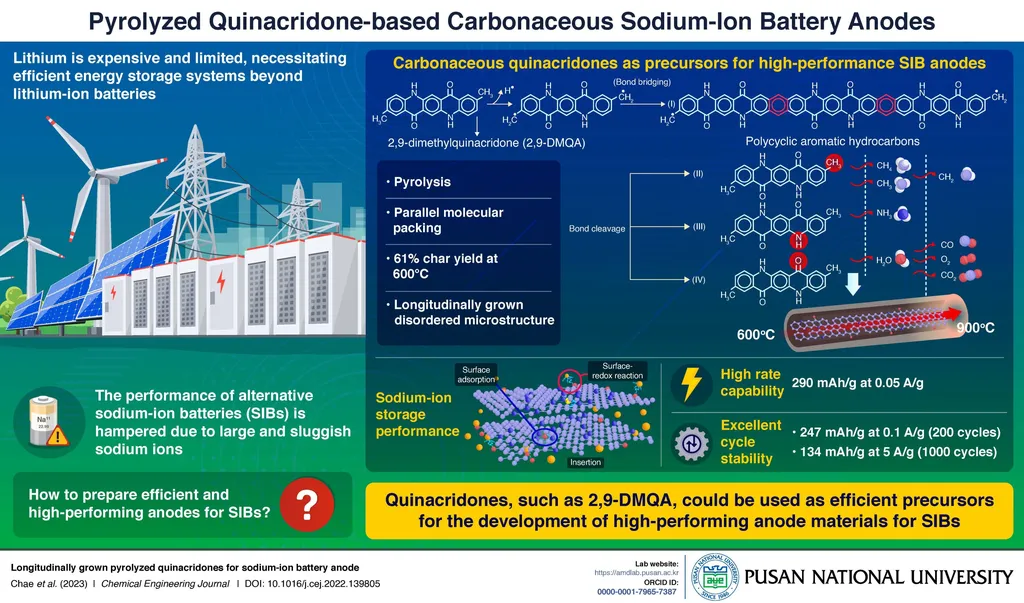In the quest for sustainable and cost-effective energy storage solutions, a team of researchers from the University of California, Santa Barbara, and the University of California, Los Angeles, has made significant strides in understanding the behavior of sodium-ion batteries. These researchers, led by Nikhil Rampal and including Stephen E. Weitzner, Fredrick Omenya, Marissa Wood, David M. Reed, Xiaolin Li, Jonathan R. I. Lee, and Liwen F. Wan, have developed a novel approach to explore the intricate relationships between the microstructure of hard carbon anodes and sodium ion transport.
Sodium-ion batteries are emerging as a promising alternative to lithium-ion batteries, particularly for large-scale energy storage applications. Hard carbon anodes, which are composed of disordered graphitic and amorphous domains, offer high capacity but exhibit complex ion transport behavior that is not well understood. This lack of understanding has hindered the optimization of battery performance. To address this challenge, the researchers introduced a data-driven framework that combines machine-learned interatomic potentials with molecular dynamics simulations. This approach allows for a systematic investigation of sodium diffusion across a wide range of carbon densities and sodium loadings.
By computing per-ion structural descriptors, the researchers identified the microscopic factors that govern ion transport. Unsupervised learning techniques revealed distinct diffusion modes, including hopping, clustering, and void trapping. Supervised analysis highlighted tortuosity and sodium-sodium coordination as primary determinants of mobility. The researchers also employed correlation mapping to connect these transport regimes to processing variables such as bulk density and sodium content. This physics-informed approach establishes quantitative structure-transport relationships that capture the heterogeneity of disordered carbon.
The findings of this study, published in the journal Nature Communications, provide mechanistic insights into sodium-ion dynamics and offer actionable design principles for engineering high-performance hard carbon anodes. For the energy industry, this research paves the way for the development of more efficient and sustainable sodium-ion batteries, which could be particularly beneficial for large-scale energy storage applications. By understanding and optimizing the microstructure of hard carbon anodes, researchers can enhance the performance and longevity of these batteries, contributing to a more sustainable energy future.
In practical terms, the insights gained from this research can guide the design and manufacturing of hard carbon anodes with improved sodium ion transport properties. This could lead to batteries with higher capacity, faster charging times, and longer lifespans. As the energy sector continues to seek out cost-effective and sustainable storage solutions, the findings from this study offer valuable guidance for the development of next-generation battery technologies.
This article is based on research available at arXiv.

